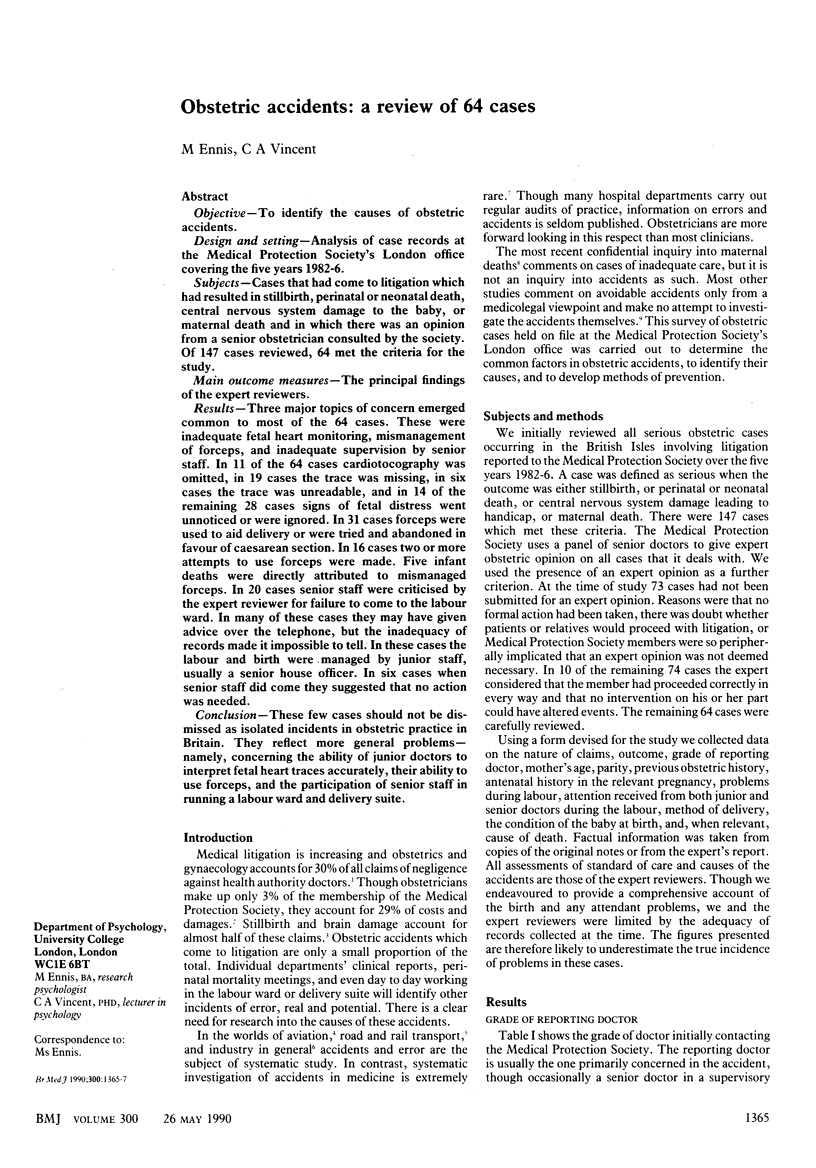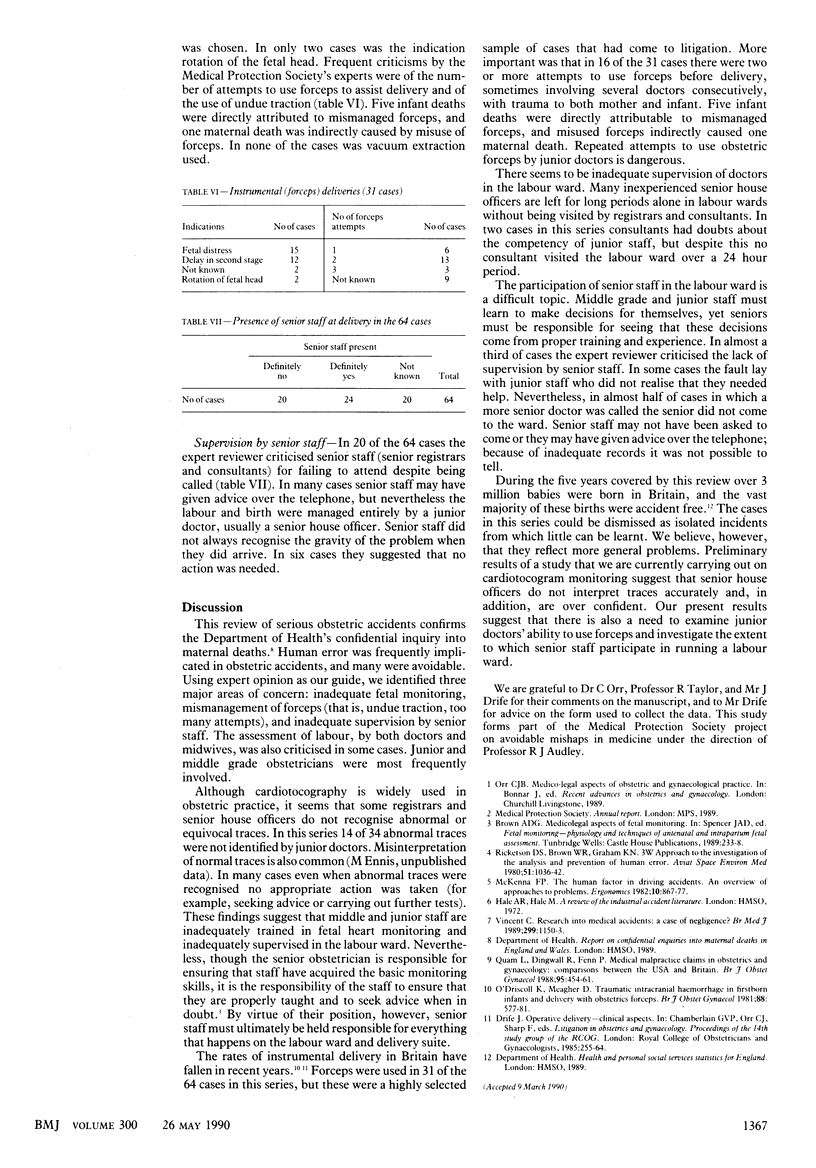Abstract
OBJECTIVE--To identify the causes of obstetric accidents. DESIGN AND SETTING--Analysis of case records at the Medical Protection Society's London office covering the five years 1982-6. SUBJECTS--Cases that had come to litigation which had resulted in stillbirth, perinatal or neonatal death, central nervous system damage to the baby, or maternal death and in which there was an opinion from a senior obstetrician consulted by the society. Of 147 cases reviewed, 64 met the criteria for the study. MAIN OUTCOME MEASURES--The principal findings of the expert reviewers. RESULTS--Three major topics of concern emerged common to most of the 64 cases. These were inadequate fetal heart monitoring, mismanagement of forceps, and inadequate supervision by senior staff. In 11 of the 64 cases cardiotocography was omitted, in 19 cases the trace was missing, in six cases the trace was unreadable, and in 14 of the remaining 28 cases signs of fetal distress went unnoticed or were ignored. In 31 cases forceps were used to aid delivery or were tried and abandoned in favour of caesarean section. In 16 cases two or more attempts to use forceps were made. Five infant deaths were directly attributed to mismanaged forceps. In 20 cases senior staff were criticised by the expert reviewer for failure to come to the labour ward. In many of these cases they may have given advice over the telephone, but the inadequacy of records made it impossible to tell. In these cases the labour and birth were managed by junior staff, usually a senior house officer. In six cases when senior staff did come they suggested that no action was needed. CONCLUSION--These few cases should not be dismissed as isolated incidents in obstetric practice in Britain. They reflect more general problems--namely, concerning the ability of junior doctors to interpret fetal heart traces accurately, their ability to use forceps, and the participation of senior staff in running a labour ward and delivery suite.
Full text
PDF


Selected References
These references are in PubMed. This may not be the complete list of references from this article.
- McKenna F. P. The human factor in driving accidents. An overview of approaches and problems. Ergonomics. 1982 Oct;25(10):867–877. doi: 10.1080/00140138208925047. [DOI] [PubMed] [Google Scholar]
- Quam L., Dingwall R., Fenn P. Medical malpractice claims in obstetrics and gynaecology: comparisons between the United States and Britain. Br J Obstet Gynaecol. 1988 May;95(5):454–461. doi: 10.1111/j.1471-0528.1988.tb12796.x. [DOI] [PubMed] [Google Scholar]
- Ricketson D. S., Brown W. R., Graham K. N. 3W approach to the investigation, analysis, and prevention of human-error aircraft accidents. Aviat Space Environ Med. 1980 Sep;51(9 Pt 2):1036–1042. [PubMed] [Google Scholar]
- Vincent C. A. Research into medical accidents: a case of negligence? BMJ. 1989 Nov 4;299(6708):1150–1153. doi: 10.1136/bmj.299.6708.1150. [DOI] [PMC free article] [PubMed] [Google Scholar]


